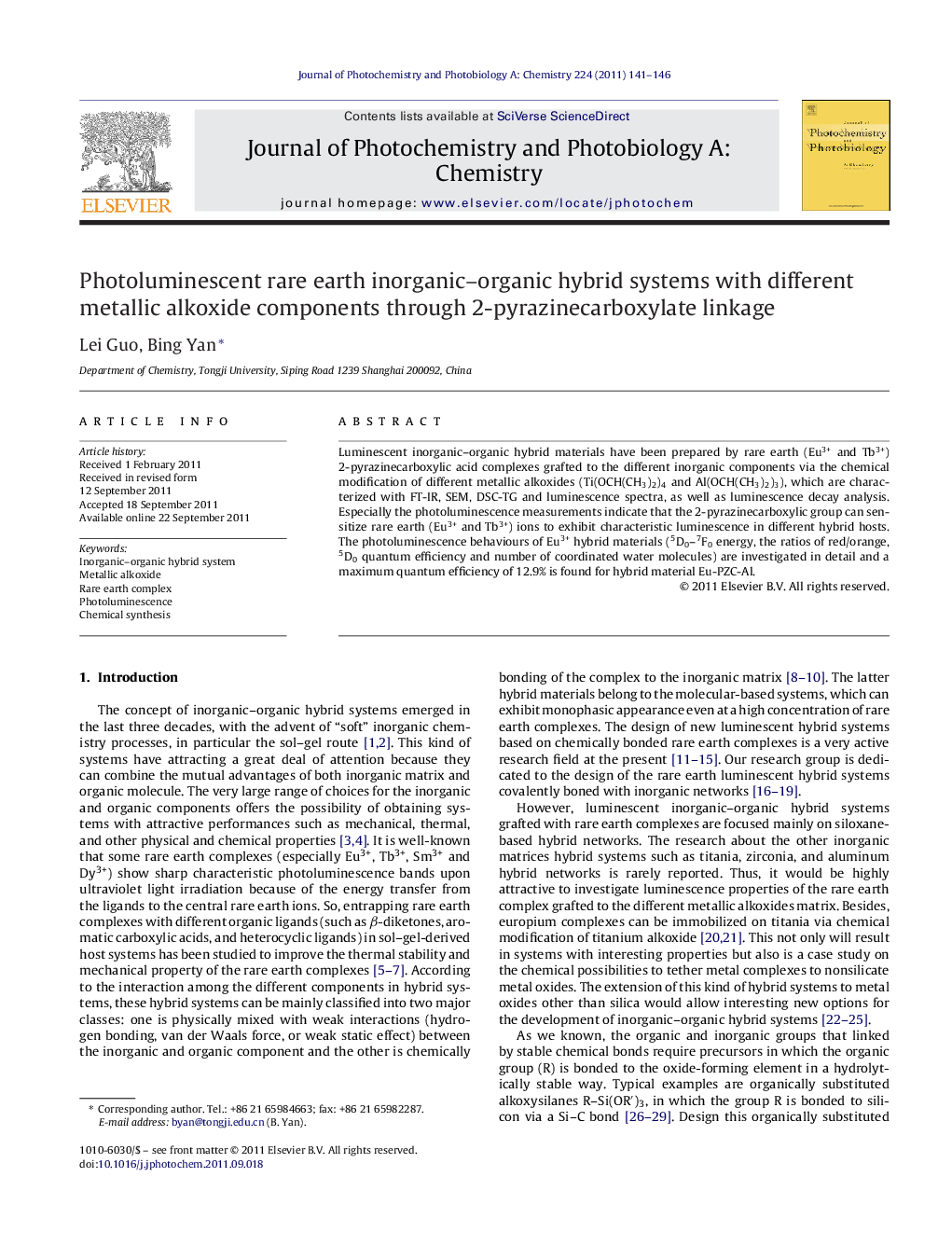| Article ID | Journal | Published Year | Pages | File Type |
|---|---|---|---|---|
| 27337 | Journal of Photochemistry and Photobiology A: Chemistry | 2011 | 6 Pages |
Luminescent inorganic–organic hybrid materials have been prepared by rare earth (Eu3+ and Tb3+) 2-pyrazinecarboxylic acid complexes grafted to the different inorganic components via the chemical modification of different metallic alkoxides (Ti(OCH(CH3)2)4 and Al(OCH(CH3)2)3), which are characterized with FT-IR, SEM, DSC-TG and luminescence spectra, as well as luminescence decay analysis. Especially the photoluminescence measurements indicate that the 2-pyrazinecarboxylic group can sensitize rare earth (Eu3+ and Tb3+) ions to exhibit characteristic luminescence in different hybrid hosts. The photoluminescence behaviours of Eu3+ hybrid materials (5D0–7F0 energy, the ratios of red/orange, 5D0 quantum efficiency and number of coordinated water molecules) are investigated in detail and a maximum quantum efficiency of 12.9% is found for hybrid material Eu-PZC-Al.
Graphical abstractLuminescent inorganic–organic hybrids have been prepared by rare earth (Eu3+ and Tb3+) 2-pyrazinecarboxylic acid complexes bonded with the different inorganic components via chemical modification of different metallic alkoxides (M(OCH(CH3)2)4 with M = Ti, and Al).Figure optionsDownload full-size imageDownload as PowerPoint slideHighlights► Novel linkages of 2-pyrazinecarboxylate linkage. ► New lanthanide hybrids with Ti–O and Al–O network. ► Luminescence in visible region.
